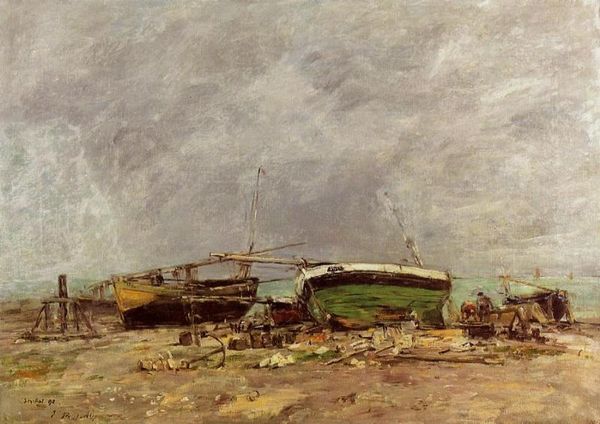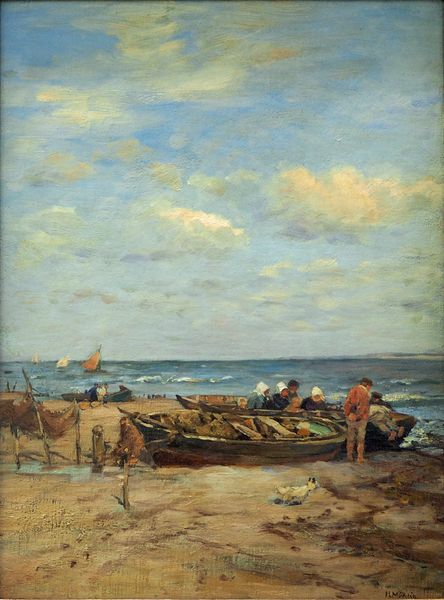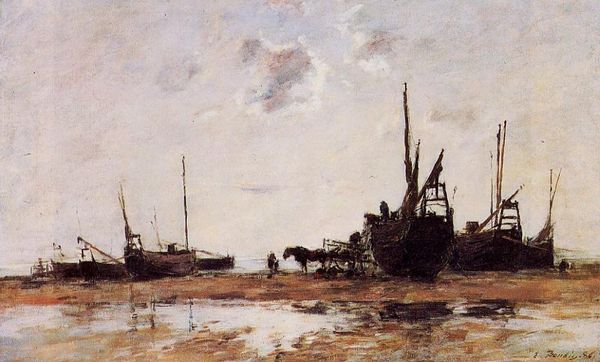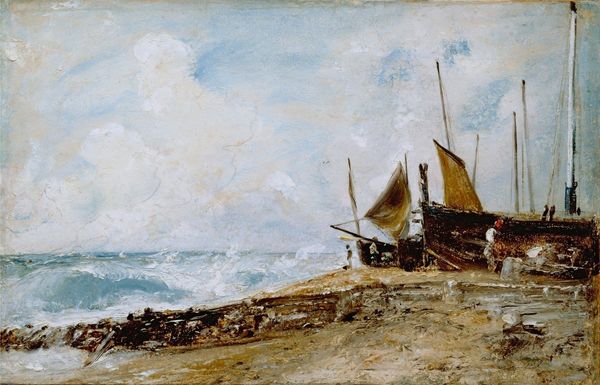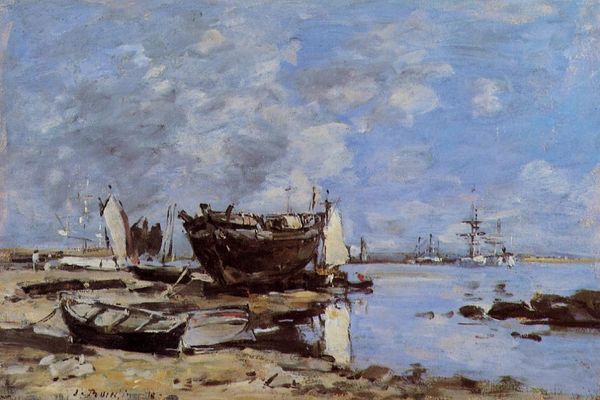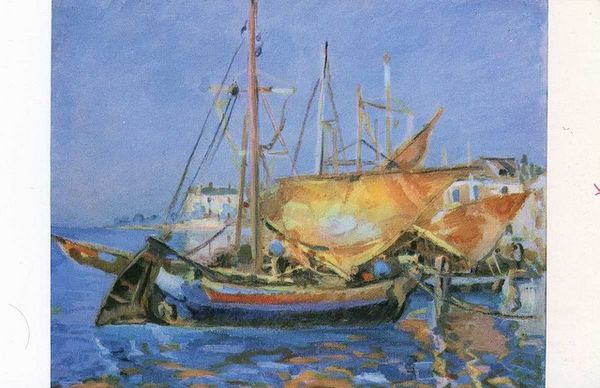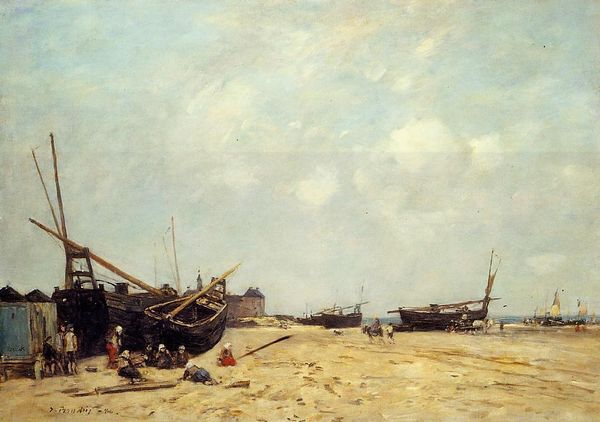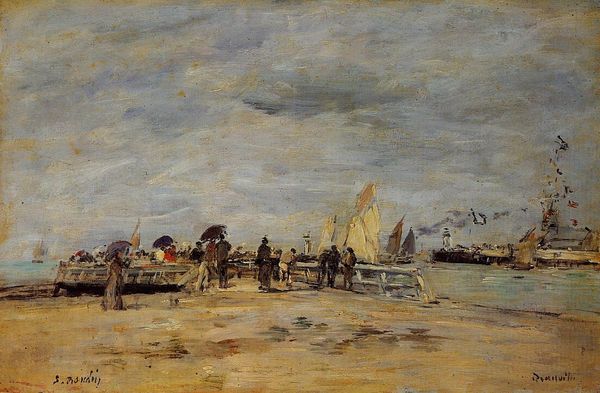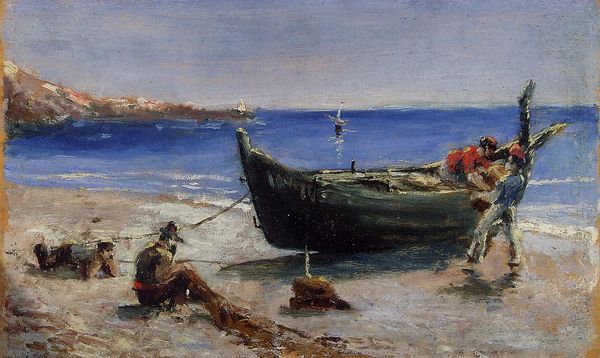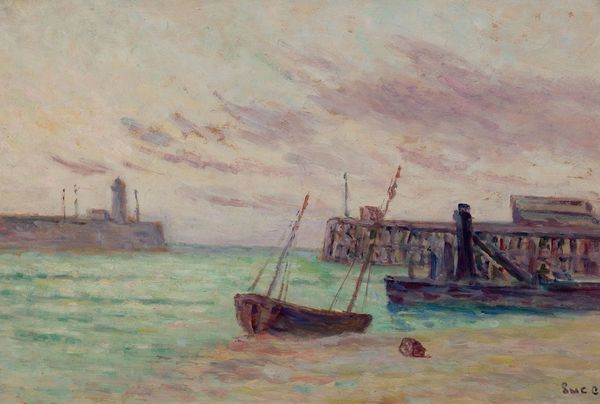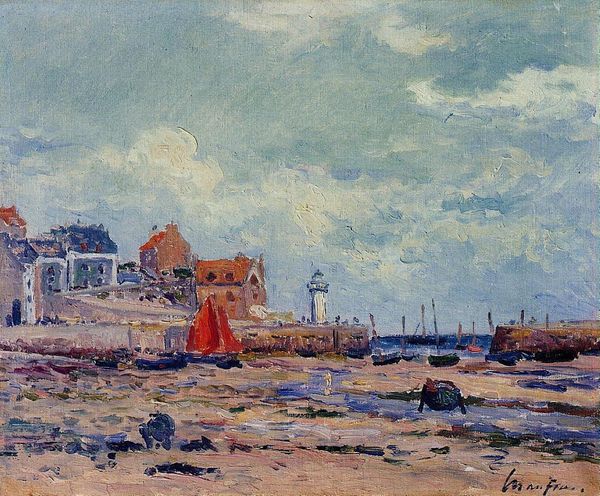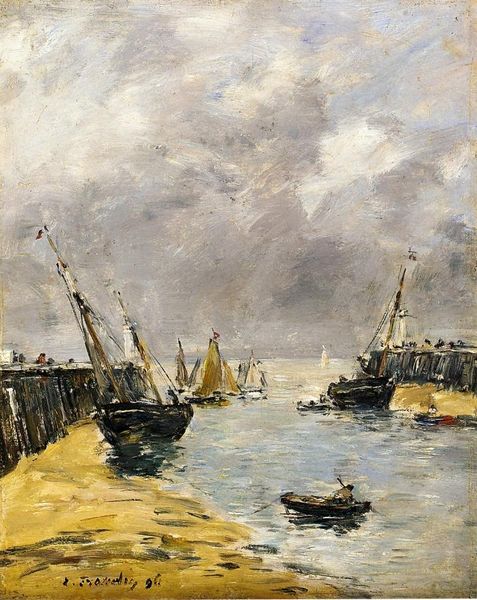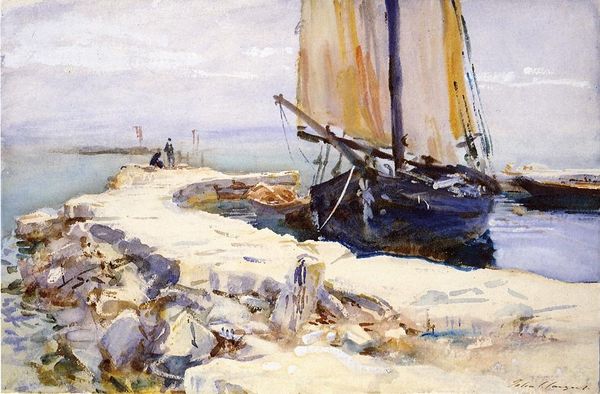
painting, plein-air, oil-paint
#
boat
#
painting
#
impressionism
#
plein-air
#
oil-paint
#
landscape
#
impressionist landscape
#
oil painting
#
genre-painting
Copyright: Public domain
Curator: Looking at "Fishing Boats at Etretat," painted by Claude Monet in 1873, I'm immediately struck by the boats themselves. These are potent symbols of maritime life and destiny, almost like resting leviathans beached temporarily before returning to the unfathomable ocean. The composition places them alongside the stark structure of a cottage. Editor: You know, I always feel a melancholic vibe from paintings like this. The muted colours, the way the boats seem stranded...it's less about the triumphant return of the fishermen and more about the quiet loneliness of the shore. I get this feeling that the painter might be going through something as if reflecting something of himself into the still tableau. Curator: That sense of solitude you pick up on really resonates. Given Impressionism's interest in capturing fleeting moments, one can interpret those boats not merely as objects, but symbols of transition. Etretat itself was becoming increasingly visited at the time. What you say strikes me as an analogy of our feelings. Even when visiting populated destinations, we tend to have isolated times, for us. This one time may relate strongly to Monet. The painting immortalizes this period of quiet reflection as modernity's currents began to swirl around the older traditions. Editor: Exactly. It’s interesting because Monet is famous for his color, right? Light and atmosphere. But here, it feels restrained. It gives me the impression of memory, like a washed-out photograph tinged with longing. You start to ponder where each person on these boats might be right now. Curator: True. Instead of bravura brushstrokes conveying light, we observe a contemplative stillness, the paint thinly applied as though hesitant to fully capture what's present. I can tell you these kinds of pieces have a psychological depth beneath the deceptively simple subject matter, where our emotions blend imperceptibly into the landscape's texture. It allows us to look within more easily because of this 'easy going' nature that the art form suggests. Editor: Well, now I’m thinking about how we burden objects with the weight of our own narratives! This is beautiful because maybe those boats are not alone, just caught in my web of thinking. Perhaps Monet was too! That's what art can do: bring up some old thinking. Curator: Yes, art becomes a mirror reflecting our personal mythologies through symbols crafted in paint. A lovely way to see it.
Comments
No comments
Be the first to comment and join the conversation on the ultimate creative platform.
